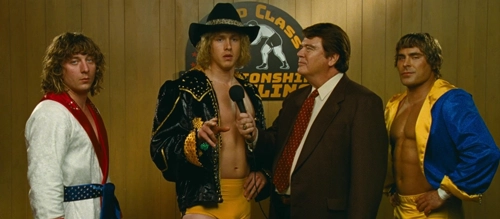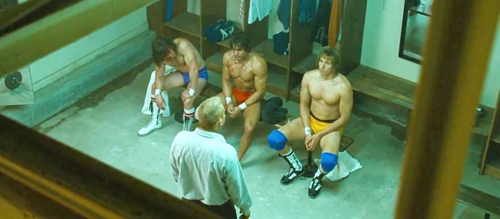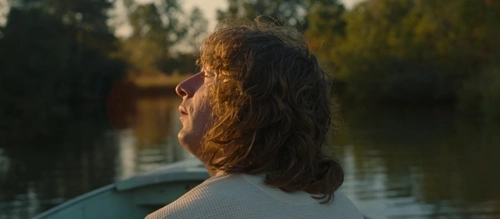The Iron Claw and Modern American Folklore
The Iron Claw is a heartbreaking film. On the surface, it tells of the trials of an often misunderstood touring circus, an ill-defined piece of entertainment, and warns us of the dangers of addiction, bodily damage, and generational trauma. It is filled with outstanding performances that stick with you, and there’s a whole world of additional information ready to be explored regarding the real people the film evaluates.
Behind all the body slams and deaths, The Iron Claw is really about myth – and specifically about the relationship between famous human beings and their sensationalised personas. It’s about the ideas and stories surrounding American folklore; the constructs of myth, legend, and oral history that has been cultivated in the Americas over centuries.

Some of the folk tales The Iron Claw is reminiscent of revolve around both real and fictional figures from the likes of Wyatt Earp to Superman, figures whose stories grew to resemble myths and thus fed into the nostalgia of America’s past, offering a reflection of a particular type of American identity. It is this mythic quality of American folklore that is most applicable to the larger-than-life figures and elements presented in The Iron Claw. Writer-director Sean Durkin uses the true story of the Von Erich family tragedy to offer a new, more modern perspective on the American myth, thus offer a brand new tale for the United States’ collective folklore.
Like traditional American folklore, professional wrestling carries a mythic quality, illustrated by outlandish characters and stories both inside and outside of the ring. The figure of the wrestler is itself connected to other folkloric figures, with the likes of Bigfoot and the Jersey Devil being replaced by The Undertaker from Death Valley, or his brother Kane, the so-called “Devil’s Favourite Demon”. Where you have Davy Crockett or John Henry in American folklore, you have Andre the Giant and Hulk Hogan in professional wrestling.
We see this kind of folkloric persona being replicated within The Iron Claw and its presentation of the Von Erich brothers, as they can be seen to be echoing a figure like the long gunslinger from Western narratives, travelling from town to town looking for work. We see the brothers take on nomad-like personas, constantly travelling and putting their bodies on the line for their work, much like Clint Eastwood in A Fistful of Dollars. We are also shown the weight this travelling has on their minds and bodies, in one moment seeing them laughing and drinking with their fellow wrestlers and the next struggling with drug addiction just so they can keep going. In this sense, The Iron Claw seeks to pull back the veil on the myth of professional wrestling by humanising the people behind the myths, showing what goes into turning these wrestlers into folkloric figures.
If we look a bit closer at the real-life Von Erich family and how they are represented within the film, we can see further emphasis on American folklore. They are a multi-generational family of professional wrestlers, and it is their tragedy that further propels them into a folkloric position. When growing to understand their plight, you cannot help but to draw connections to similar families in American folklore like the Hatfields and McCoys.

To begin with, the Von Erichs can be seen enacting the American dream, as the film explains how they are descended from immigrants and were able to find success in the USA, and particularly in the cold-hearted, ultra-free-market world of professional wrestling. The American dream is of course vital to American folklore as it carries with it a mythic quality, being presented as something that needs to be conquered to thrive and survive, just as the continental land mass was.
It is in the name Von Erich where we find another connection to folklore, and more specifically folk horror. In the film, Kevin Von Erich explains the origins of his family’s name, and specifically how it comes from when his father, Fritz, changed his name back to his grandmother’s name. He then explains that his grandmother’s family also suffered a series of tragedies and thus people started to believe that the Von Erich name was cursed. This belief is only strengthened throughout the film, with Kevin even changing his children’s last names out of fear for their safety. This can be likened to the unearthing of something forgotten, just as happens in folk horror stories where the past is often unearthed in a literal sense to provide the metaphor of fearing one’s past or looking to escape from it. Such examples can be seen in Midsommar or A Field in England.
Both the myth of the American Dream and that of folk horror are tied to the earth, specifically the idea and function of land. Nature has long played a vital role in how folklore is created and maintained. The idea of not only discovering the land but disturbing and then conquering it is vital to each folkloric element of American culture, and in The Iron Claw we see the family look to conquer their own mythology and set course towards a new destination.

We see nature play quite a literal role in the film as we are shown several moments of isolation within the space of fields and trees. In these shots, and by extension in most scenes where nature is present, there is a hazy and dreamlike quality to the cinematography. The Von Erich farmlands are, therefore, almost otherworldly – an element solidified by a late-film scene in which the deceased Von Erich brothers reunite on “the other side”, the golden hues of the shot coming to symbolise something new and altogether more hopeful.
Throughout The Iron Claw we rarely see an urban location besides the locker rooms and stadiums in which the brothers wrestle. Instead, we are repeatedly presented shots of fields, trees, and rivers that surround the Von Erich ranch. Take, for example, the scene where Kerry returns home from college: he must walk down a long dirt path, covered with trees that dowse the road in shade. From there, he walks beyond dense open fields until finally ending up at the ranch, neatly enclosed by trees. This journey physically and visually transports both the characters and us (as the watching public) into the world of the Von Erichs, a mythical space of trauma and tragedy.
Likewise, the Von Erich family matriarch Doris’ painting of her childhood home can be seen as an idealised version of the little house on the prairie, surrounded by flowers. Her painting is a nostalgic view of her past, perhaps even a longing to return to it as she points out how important it is to her. Once again, this moment reiterates the importance that land and nature can have on American folklore as it can be used to build an idealised version of life, one that ideologically aligns with the myth of how conquering equals success.
As with any good thematic undertaking in cinema, this all comes to a head at the end of the film when the Von Erich brothers finally reunite. They are sat by a river, each as the best versions of themselves. They are the idealised and heroic versions of each other, and have therefore completed their transition from real human beings to the folkloric figures that we are encouraged to understand them as, and have come to understand them as post-film release.
By exploring the mythology of professional wrestling and the personas that inhabit it, and using wrestling as a vessel to build up the mythology of the Von Erichs, The Iron Claw places the idea of American folklore under a microscope and manages to add a modern entry into American culture’s vast catalogue of ideas. To do so, it explores identity within the Von Erich family by playing on the ideas created by the myth of the American dream and the horrors that can come from the past, be they individual horrors, familial horrors, or cultural ones. Equally, it uses nature as a tool to visually communicate how this story has an otherworldly quality to it, transporting us all into a world where we can see a folktale at the source of its creation.
Written by Matthew Peyton
You can support Matthew Peyton in the following places:
X (Twitter): @MatthewPeyton12
Letterboxd: Matthew_Maxwell

